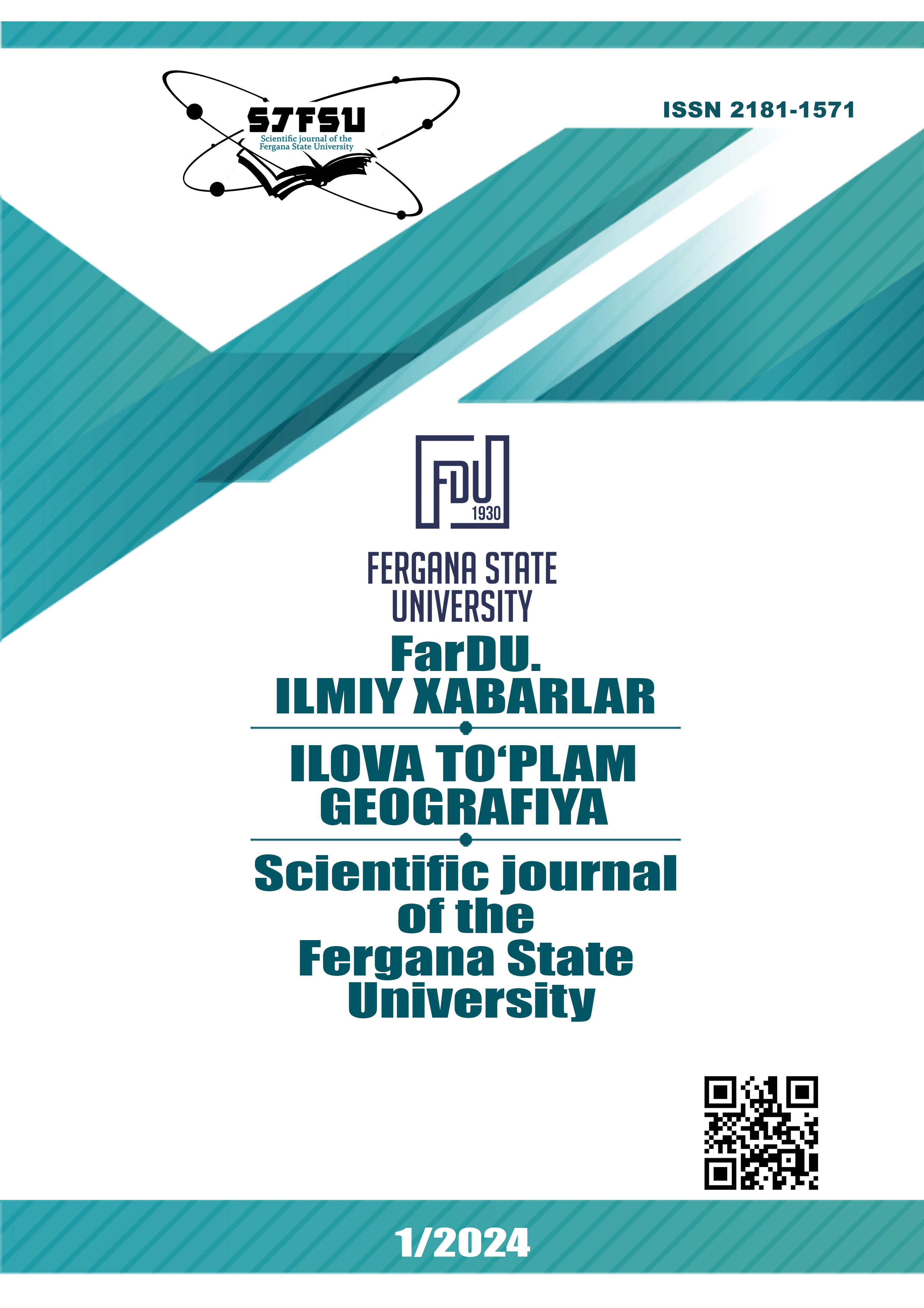SOCIAL ASPECTS OF URBANIZATION DEVELOPMENT IN SOUTHERN UZBEKISTAN
Keywords:
urbanization, city, central city, hierarchy of cities, function of cities, specialization of cities, social spheres, urban lifestyle, service industries, retail trade.Abstract
In the article, the social aspects of the development of urbanization processes are studied on the example of Southern Uzbekistan. Based on the purpose, the relationship between the network, composition and hierarchy of regional cities and the service sector is revealed. That is, the development of social spheres, together with serving the growth of cities, urban areas have collected the most important and largest set of services based on the population.
To study the influence of social spheres in the development of urbanization processes, to analyze the qualitative and quantitative expansion of service networks in accordance with the hierarchy of cities, to study social spheres as a city-forming factor in the case of Southern Uzbekistan, setting the goals and objectives of the work will give.
The methodological basis of the article is a complex approach, in which methods such as geographical comparison, system-content, historical, statistical, mathematical, territorial analysis are used. The research work was carried out based on the analysis of data from statistical departments of Surkhandarya and Kashkadarya regions, as well as special scientific literature and cartographic sources.
Areas of public service - trade, education, health care system are located in settlements, that is, in central places, at different levels. Each of these places has its own unique influence and scope of service. In this regard, cities are considered to be the center of the complex of social spheres of that region, in addition to performing the function of a specific administrative (provincial and district centers) and economic (large industrial production facilities, transport hubs) "capital".
References
Доманьский Р. Экономическая география: динамический аспект. – М.: Новый хронограф, 2010. – 376 с. (Domanski R. Economic geography: dynamic aspect. – M.: New Chronograph, 2010. – 376 p.)
Межевич М. Н. Социальное развитие и город. – Л.: Наука, 1979. – 176 с. (Mezhevich M. N. Social development and the city. – L.: Nauka, 1979. – 176 p.)
Назаров М. И., Тожиева З. Н. Ижтимоий география. – Т., 2003. – 92 б. (Nazarov M. I., Tojieva Z. N. Social geography. - T., 2003. - 92 p.)
Солиев А., Назаров М. Ўзбекистон қишлоқлари (Қишлоқ жойлар географияси). Т.: “Fan va texnologiya”, 2009. – 212 б. (Soliev A., Nazarov M. Villages of Uzbekistan (Geography of rural areas). T.: " Fan va texnologiya ", 2009. - 212 p.)
Қурбонов П.Р. Жанубий Ўзбекистонда урбанизация жараёнлари. Монография. -Т.: «МUMTOZ SO`Z». 2019 йил. – 180 б. (Kurbanov P.R. Urbanization processes in South Uzbekistan. Monograph. -T.: " МUMTOZ SO`Z ". 2019 year. - 180 p.)
Олий таълим муассасалари рўйхати (egov.uz) https://data.egov.uz/data/6102947d2a2e256d868e8365 (List of higher education institutions(egov.uz) https://data.egov.uz/eng/data/6102947d2a2e256d868e8365
Downloads
Published
Issue
Section
License
Copyright (c) 2024 Scientific journal of the Fergana State University

This work is licensed under a Creative Commons Attribution-NonCommercial-NoDerivatives 4.0 International License.

